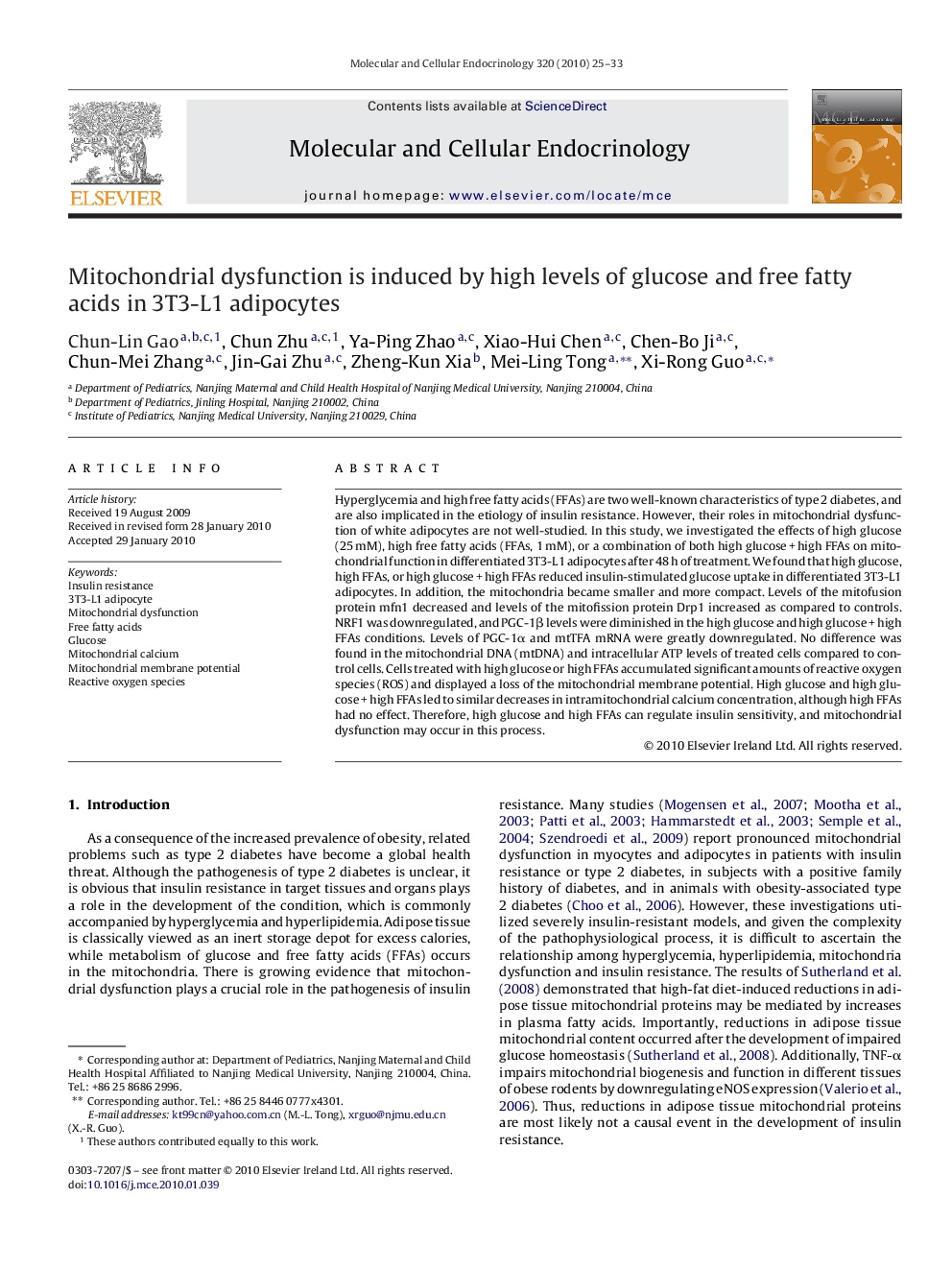| Article ID | Journal | Published Year | Pages | File Type |
|---|---|---|---|---|
| 2196898 | Molecular and Cellular Endocrinology | 2010 | 9 Pages |
Hyperglycemia and high free fatty acids (FFAs) are two well-known characteristics of type 2 diabetes, and are also implicated in the etiology of insulin resistance. However, their roles in mitochondrial dysfunction of white adipocytes are not well-studied. In this study, we investigated the effects of high glucose (25 mM), high free fatty acids (FFAs, 1 mM), or a combination of both high glucose + high FFAs on mitochondrial function in differentiated 3T3-L1 adipocytes after 48 h of treatment. We found that high glucose, high FFAs, or high glucose + high FFAs reduced insulin-stimulated glucose uptake in differentiated 3T3-L1 adipocytes. In addition, the mitochondria became smaller and more compact. Levels of the mitofusion protein mfn1 decreased and levels of the mitofission protein Drp1 increased as compared to controls. NRF1 was downregulated, and PGC-1β levels were diminished in the high glucose and high glucose + high FFAs conditions. Levels of PGC-1α and mtTFA mRNA were greatly downregulated. No difference was found in the mitochondrial DNA (mtDNA) and intracellular ATP levels of treated cells compared to control cells. Cells treated with high glucose or high FFAs accumulated significant amounts of reactive oxygen species (ROS) and displayed a loss of the mitochondrial membrane potential. High glucose and high glucose + high FFAs led to similar decreases in intramitochondrial calcium concentration, although high FFAs had no effect. Therefore, high glucose and high FFAs can regulate insulin sensitivity, and mitochondrial dysfunction may occur in this process.
